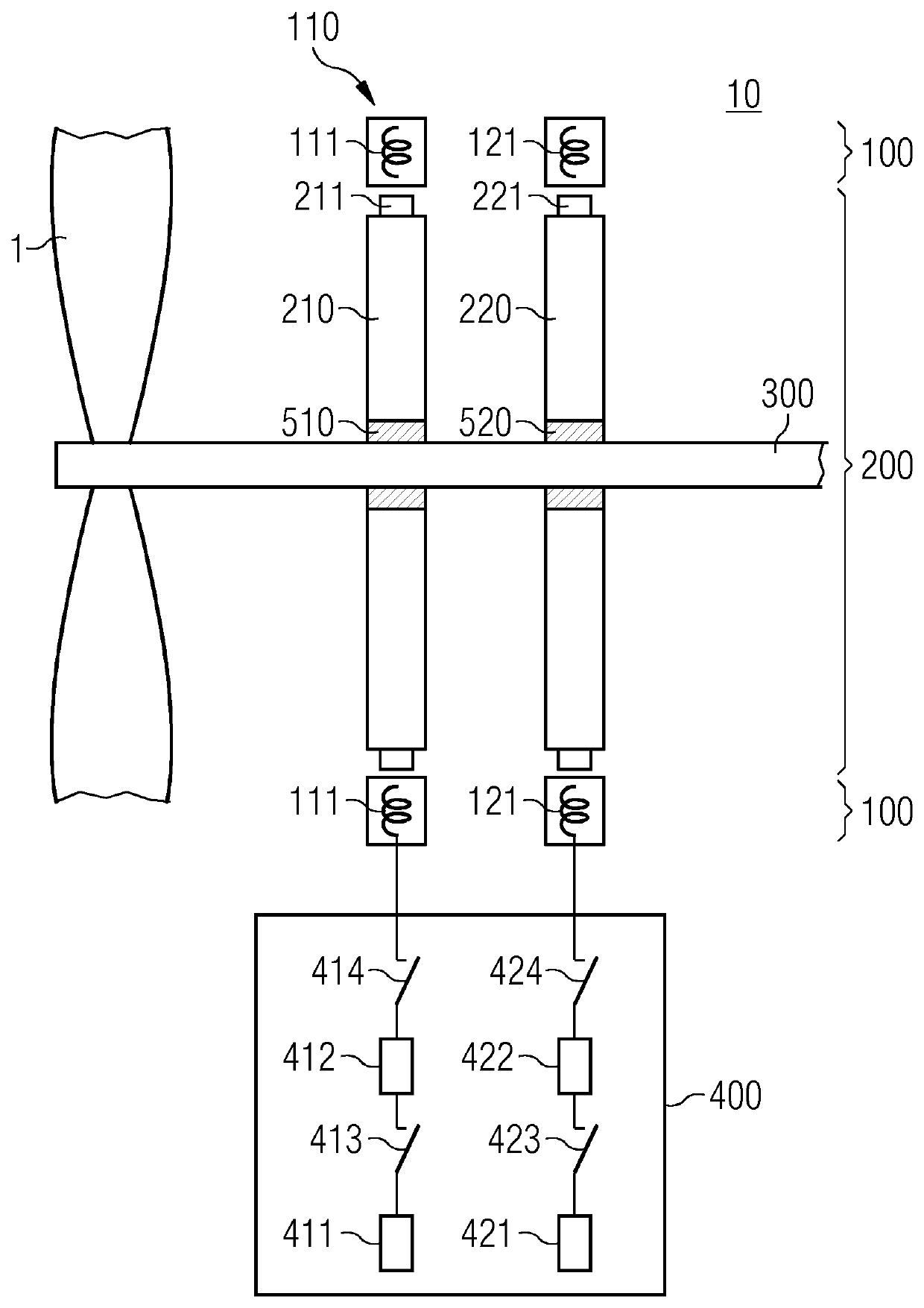Electrical machine for driving propulsion
a technology of electric motors and propulsion motors, applied in the direction of propulsion by batteries/cells, electric devices, transportation and packaging, etc., can solve the problems of affecting the operation of the electric machine, the failure of the stator winding system of the machine, and the breakdown of the electrical machine, so as to reduce the power, suppress the induction of undeired current in the faulty winding system, and the effect of effective use of the redundancy of the electrical machin
- Summary
- Abstract
- Description
- Claims
- Application Information
AI Technical Summary
Benefits of technology
Problems solved by technology
Method used
Image
Examples
Embodiment Construction
[0034]Terms such as “axial” and “radial” relate to the shaft or axis used in the respective FIGURE or in the respectively described example. The directions axial and radial always relate to a rotation axis of the respective rotor.
[0035]FIG. 1 depicts, by way of example and in simplified form, an electrical machine 10 that is configured as an electric motor or drive arrangement. Various components of the machine may be arranged differently depending on the configuration of the electrical machine as a generator or as an electric motor and / or as, for example, a radial or axial flux machine with a rotor that is configured as an internal or else as an external rotor, etc.
[0036]The electric motor 10 may be provided, for example, in order to drive a propulsion 1 of an aircraft (not illustrated), for example a propeller 1, in such a way that the propeller 1 rotates in a working direction of rotation in order to propel the aircraft. Other uses of the electrical machine for drive purposes or ...
PUM
 Login to View More
Login to View More Abstract
Description
Claims
Application Information
 Login to View More
Login to View More - R&D
- Intellectual Property
- Life Sciences
- Materials
- Tech Scout
- Unparalleled Data Quality
- Higher Quality Content
- 60% Fewer Hallucinations
Browse by: Latest US Patents, China's latest patents, Technical Efficacy Thesaurus, Application Domain, Technology Topic, Popular Technical Reports.
© 2025 PatSnap. All rights reserved.Legal|Privacy policy|Modern Slavery Act Transparency Statement|Sitemap|About US| Contact US: help@patsnap.com

